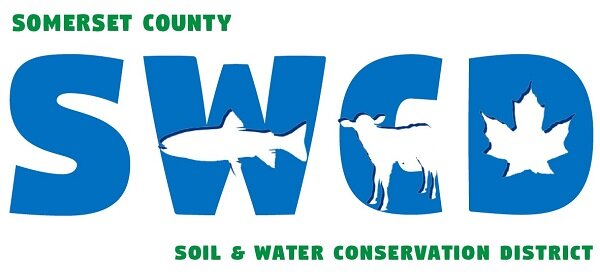Leave your woods messy!
When walking through a woodland, it's easy to see fallen branches, decaying trees, and scattered brush piles as unsightly messes in an otherwise serene landscape. However, debris plays an essential role in the health and vitality of forest ecosystems. Leaving woody debris in place is one of the simplest and most effective ways to support your woodland's ecological balance.
While branches, snags, and downed trees may no longer be alive, they are far from "dead." These materials are brimming with life, even in their decaying state. As they break down, bacteria and fungi begin the slow but vital decomposition process, releasing nutrients into the soil. Think of these fallen branches and logs as nature's fertilizer. They feed the next generation of trees, shrubs, and undergrowth, ensuring a thriving woodland ecosystem.
But it doesn’t stop there. Bacteria and fungi are a food source for many organisms, from tiny insects to larger forest creatures. Snags (standing dead trees) and downed wood create microhabitats that support birds, small mammals, amphibians, and countless invertebrates.
Fallen trees and branches become homes for salamanders, frogs, and beetles, while standing dead trees provide nesting cavities for owls, bats, and woodpeckers. Brush piles created from timber harvest leftovers or firewood cutting act as critical shelter for rabbits, mice, and other small mammals.
Standing dead oaks at Yankee Woodlot Demonstration Forest provide shelter and forage for myriad species, including porcupines, raccoons, pileated woodpeckers, and gray squirrels.
Young forest regrowth, leaning dead trees, and brush piles each serve a unique function in supporting wildlife. A diverse woodland habitat includes a mix of:
Young regrowth: Vital for deer, rabbits, and birds that thrive in dense cover.
Woody debris on the forest floor: Crucial for insects, fungi, and amphibians.
Standing dead trees: Ideal nesting sites for cavity-nesting birds and a food source for insectivores.
Brush piles: Safe havens for small mammals and birds.
When we remove every fallen branch, clear every log, and tidy up every brush pile, we strip the forest of these essential microhabitats. The result is a less diverse, less resilient ecosystem.
If you manage a woodlot or harvest firewood, consider leaving some woody debris behind. Not only does it enrich the soil and support wildlife, but it also helps prevent erosion and retains moisture in the forest floor. These benefits ripple outward, supporting healthier trees and a more robust forest canopy.
If aesthetics are a concern, debris can be strategically piled or dispersed to reduce visual impact while still offering ecological benefits. The key is balance—leaving enough material to maintain ecosystem health without overwhelming walking paths or creating fire hazards.
Nature doesn’t waste anything, and forests are no exception. Fallen branches, downed trees, and brush piles are not just leftovers; they are building blocks of life. By allowing woody debris to remain in place, you're contributing to a more resilient, self-sustaining woodland.
Next time you're in the woods and see a fallen tree or a pile of branches, take a moment to appreciate the life they support. A forest left a little "messy" is often a truly alive forest.
Are you a landowner, woodlot manager, or farmer in Somerset County? Join our email newsletter for local resources, grants, reports and more. If you have questions about managing your natural resources, call or email us, and we’ll connect you with the assistance you need.

